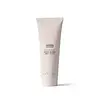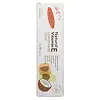What's inside
What's inside
 Key Ingredients
Key Ingredients

 Benefits
Benefits

 Concerns
Concerns

 Ingredients Side-by-side
Ingredients Side-by-side

Water
Skin ConditioningIsopentyldiol
HumectantJojoba Esters
EmollientCetyl Alcohol
EmollientCetearyl Alcohol
EmollientStearyl Alcohol
EmollientTheobroma Cacao Seed Butter
EmollientRetinol
Skin ConditioningSqualane
EmollientTocopherol
AntioxidantCaprylic/Capric Triglyceride
MaskingXanthan Gum
EmulsifyingCetearyl Glucoside
EmulsifyingHydroxyacetophenone
Antioxidant1,2-Hexanediol
Skin ConditioningCaprylyl Glycol
EmollientHydrogenated Lecithin
EmulsifyingPolyglyceryl-10 Dioleate
EmulsifyingCitric Acid
BufferingSodium Gluconate
Skin ConditioningGlycine Soja Oil
EmollientPolyglyceryl-10 Dipalmitate
EmollientPhenoxyethanol
PreservativeErgothioneine
AntioxidantWater, Isopentyldiol, Jojoba Esters, Cetyl Alcohol, Cetearyl Alcohol, Stearyl Alcohol, Theobroma Cacao Seed Butter, Retinol, Squalane, Tocopherol, Caprylic/Capric Triglyceride, Xanthan Gum, Cetearyl Glucoside, Hydroxyacetophenone, 1,2-Hexanediol, Caprylyl Glycol, Hydrogenated Lecithin, Polyglyceryl-10 Dioleate, Citric Acid, Sodium Gluconate, Glycine Soja Oil, Polyglyceryl-10 Dipalmitate, Phenoxyethanol, Ergothioneine
Water
Skin ConditioningTheobroma Cacao Extract
Skin ConditioningGlycerin
HumectantTocopherol
AntioxidantPrunus Amygdalus Dulcis Oil
Skin ConditioningTheobroma Cacao Seed Butter
EmollientHelianthus Annuus Seed Oil
EmollientHydrogenated Vegetable Oil
EmollientCocos Nucifera Oil
MaskingGlyceryl Stearate
EmollientGlycine Soja Oil
EmollientCetearyl Alcohol
EmollientMacadamia Ternifolia Seed Oil
EmollientPrunus Armeniaca Kernel Oil
MaskingPersea Gratissima Oil
Skin ConditioningArgania Spinosa Kernel Oil
EmollientRosa Canina Fruit Oil
EmollientAscorbyl Palmitate
AntioxidantPEG-100 Stearate
Sodium Polyacrylate
AbsorbentCaprylyl Glycol
EmollientEthyl Lauroyl Arginate Hcl
Skin ConditioningLecithin
EmollientTetrasodium EDTA
Zea Mays Oil
EmulsifyingCI 40800
Cosmetic ColorantWater, Theobroma Cacao Extract, Glycerin, Tocopherol, Prunus Amygdalus Dulcis Oil, Theobroma Cacao Seed Butter, Helianthus Annuus Seed Oil, Hydrogenated Vegetable Oil, Cocos Nucifera Oil, Glyceryl Stearate, Glycine Soja Oil, Cetearyl Alcohol, Macadamia Ternifolia Seed Oil, Prunus Armeniaca Kernel Oil, Persea Gratissima Oil, Argania Spinosa Kernel Oil, Rosa Canina Fruit Oil, Ascorbyl Palmitate, PEG-100 Stearate, Sodium Polyacrylate, Caprylyl Glycol, Ethyl Lauroyl Arginate Hcl, Lecithin, Tetrasodium EDTA, Zea Mays Oil, CI 40800
 Reviews
Reviews

Ingredients Explained
These ingredients are found in both products.
Ingredients higher up in an ingredient list are typically present in a larger amount.
Caprylyl Glycol is a humectant and emollient, meaning it attracts and preserves moisture.
It is a common ingredient in many products, especially those designed to hydrate skin. The primary benefits are retaining moisture, skin softening, and promoting a healthy skin barrier.
Though Caprylyl Glycol is an alcohol derived from fatty acids, it is not the kind that can dry out skin.
This ingredient is also used as a preservative to extend the life of products. It has slight antimicrobial properties.
Learn more about Caprylyl GlycolCetearyl alcohol is a mixture of two fatty alcohols: cetyl alcohol and stearyl alcohol. It is mainly used as an emulsifier. Emulsifiers help prevent the separation of oils and products. Due to its composition, it can also be used to thicken a product or help create foam.
Cetearyl alcohol is an emollient. Emollients help soothe and hydrate the skin by trapping moisture.
Studies show Cetearyl alcohol is non-toxic and non-irritating. The FDA allows products labeled "alcohol-free" to have fatty alcohols.
This ingredient is usually derived from plant oils such as palm, vegetable, or coconut oils. There is debate on whether this ingredient will cause acne.
Due to the fatty acid base, this ingredient may not be Malassezia folliculitis safe.
Learn more about Cetearyl AlcoholGlycine Soja Oil comes from the soybean. Glycine Soja is native to eastern Asia.
Soybean oil is an emollient. It is rich in antioxidants and fatty acids including palmitic, stearic, oleic, and linoleic acids.
As an emollient, the fatty acids in soybean oil helps keep your skin soft and hydrated. It does so by creating a film on top that traps moisture in.
Soybean oil is also rich in vitamin E, a potent antioxidant. Vitamin E is also anti-inflammatory and provides a soothing effect.
Studies show soy may help fade hyperpigmentation from UVB. It does so by disrupting the melanin process from UVB induced skin inflammation.
This ingredient may not be malassezia folliculitis, or fungal-acne, safe.
Soybeans are rich in proteins and are part of the legume family. Foods made with soybeans include tofu, soymilk, edamame, miso, and soy sauce.
Learn more about Glycine Soja OilTheobroma Cacao Seed Butter comes from the Theobroma cacoa, or Cacao tree. Cacao trees are native to tropical landscapes.
Like other plant butters, Cacao seed butter is an emollient. Emollients help soothe and soften your skin. By creating a barrier to trap moisture in, emollients help keep your skin hydrated.
Cacao seed butter contains antioxidants known as polyphenols. Antioxidants help fight free-radical molecules by stabilizing them. Unstable free-radicals may cause damage to your skin cells. Antioxidants may help with anti-aging.
Theobroma Cacao Seed Butter can be bad for acne prone skin.
Learn more about Theobroma Cacao Seed ButterTocopherol (also known as Vitamin E) is a common antioxidant used to help protect the skin from free-radicals and strengthen the skin barrier. It's also fat soluble - this means our skin is great at absorbing it.
Vitamin E also helps keep your natural skin lipids healthy. Your lipid skin barrier naturally consists of lipids, ceramides, and fatty acids. Vitamin E offers extra protection for your skin’s lipid barrier, keeping your skin healthy and nourished.
Another benefit is a bit of UV protection. Vitamin E helps reduce the damage caused by UVB rays. (It should not replace your sunscreen). Combining it with Vitamin C can decrease sunburned cells and hyperpigmentation after UV exposure.
You might have noticed Vitamin E + C often paired together. This is because it is great at stabilizing Vitamin C. Using the two together helps increase the effectiveness of both ingredients.
There are often claims that Vitamin E can reduce/prevent scarring, but these claims haven't been confirmed by scientific research.
Learn more about TocopherolWater. It's the most common cosmetic ingredient of all. You'll usually see it at the top of ingredient lists, meaning that it makes up the largest part of the product.
So why is it so popular? Water most often acts as a solvent - this means that it helps dissolve other ingredients into the formulation.
You'll also recognize water as that liquid we all need to stay alive. If you see this, drink a glass of water. Stay hydrated!
Learn more about Water